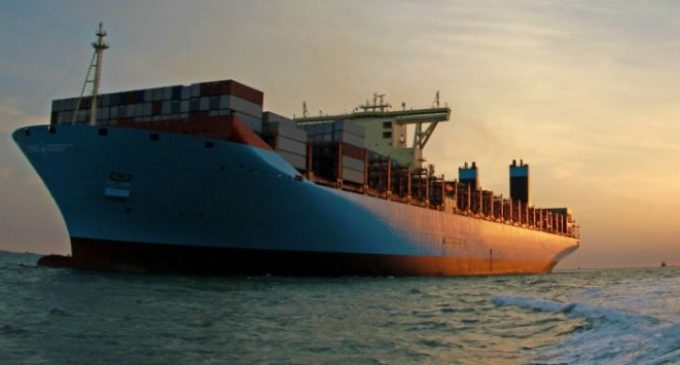Irish food and drink exports exceed €16 billion for second consecutive year

The value of Ireland’s food, drink and horticulture exports were almost €16.3 billion in 2023, according to Bord Bia’s Export Performance and Prospects report 2023/24. Exports were impacted by inflation and a cost-of-living crisis which continued to affect consumer spending last year, in addition to significant downward pressure on trade prices. The overall value of Irish exports declined by 4% compared to the previous year, when exports grew by a record breaking 22%. The value of exports remains 24% higher than 2019, and the industry’s ability to retain much of the growth from 2022 represented a solid performance in a challenging global marketplace.
Export Performance 2023
The dairy sector, which accounts for almost 40% of overall Irish food and drink exports, saw export values decline by 8% to €6.3 billion last year. The decline in the value of butter and casein exports was partly offset by increases in the value of cheese, specialist nutritional powders, yoghurt, and whole milk powder.
The value of meat and livestock exports was largely stable at €4.2 billion, as increases in the value of beef, poultry and live exports were offset by lower sheepmeat and pigmeat exports.
The prepared consumer foods (PCF) sector had a strong year in value terms, with sales increasing by 7% to €3.1 billion, thanks to increased exports of meal solutions, bakery products and soft drinks and juices. However, volume growth was muted, particularly to the UK market.
The value of drink exports declined by 8% to €1.8 billion due largely to short-term market factors in the North American spirits sector. Beer and cider exports increased by 11%.
Seafood sales declined by 14% to €550 million due largely to a reduction in the volume of pelagic fish and salmon exports, while exports of Irish horticulture and cereals were valued at €295 million in 2023, a 6% decline on the previous year.
Speaking at the launch of the report, the Minister for Agriculture, Food and the Marine, Charlie McConalogue, TD, said the Irish food, drink and horticulture sector had performed well despite ongoing challenges in the global marketplace: “I am delighted to see that the value of Irish food and drink exports surpassed the €16 billion mark for the second year in a row and that the sector’s overall exports when non-food products are included was €18.5 billion. This is a significant achievement given that we are living through a period of huge flux, with climate change, inflation, geopolitical instability, and cost of living challenges all affecting the global economy and export performance.
“Despite this incredibly challenging environment, Ireland has continued to build on its reputation as a sustainable producer and supplier of high-quality food.
“There would be no exports of Irish food and drink without the quality output of our farmers and fishers, or the innovation of our food processors who collectively make up this vital sector of the Irish economy, and I would like to congratulate them for their efforts during the year. Working with a dedicated team in Bord Bia, we will continue to strive for increased opportunities and value for the sector in 2024 and I am looking forward to leading more dedicated trade missions to key overseas markets this year.”
The Department of Agriculture, Food, and the Marine estimates that the value of non-edible agri-food exports in 2023 was c.€2.3 billion. Adding this estimate to the Bord Bia export figures, which are the focus of Bord Bia’s Export Performance and Prospects report, indicates that total value of Irish agri-food sector exports declined by 3% to €18.5 billion last year.
Exporter sentiment
Bord Bia Chief Executive Jim O’Toole commended: “The Irish food, drink, and horticulture industry had a very solid performance last year, given the very challenging market conditions. Notwithstanding these challenges, based on our recent Exporter Sentiment study, the majority (73%) of Irish food and drink exporters remain optimistic about expected market growth in 2024. Companies were most positive about the potential for export growth to Europe and the US (68%), followed by the UK (63%).
“However, despite the positive outlook, more than half (53%) of Irish food and drink companies believe their competitiveness has been eroded over the past 12 months, with energy prices, inflation and labour costs having the biggest impact. Looking ahead, market volatility and inflation, although slowly easing, will continue to be two key factors for this year, while input and labour costs remain a risk to competitiveness. As such, the market for Irish food, drink and horticulture exports will remain challenged this year.”
Export destinations
Exports to the EU saw a slight decline in 2023 of 2% and were worth €5.8 billion last year. The share of total exports destined for the EU remained at around 36% for the second consecutive year. France, Germany, and the Netherlands accounted for 60% of sales to the EU, and the combined value of sales to these markets declined by 7% last year, due to lower dairy exports.
The UK is still the largest single destination for Irish food, and drink exports, valued at an estimated €5.6 billion last year. The share of total exports destined for the UK in 2023 is estimated at 34%, up two percentage points on 2022 – but this is still lower than trading levels before the Brexit referendum. The increase in trade during 2023 largely reflected higher exports of meat and livestock, drink, and PCF products, which grew by a combined €250 million.
The value of trade to international markets fell by 10% in 2023 to €4.9 billion. This decline reflected reduced trade to North America, particularly drink exports. Exports to Asia were down across almost all categories, most notably dairy and pigmeat, decreasing by 3% and 24% respectively. In 2023, 30% of Irish food and drink exports, in value terms, were destined for international markets, down from a 32% share in 2022.


































